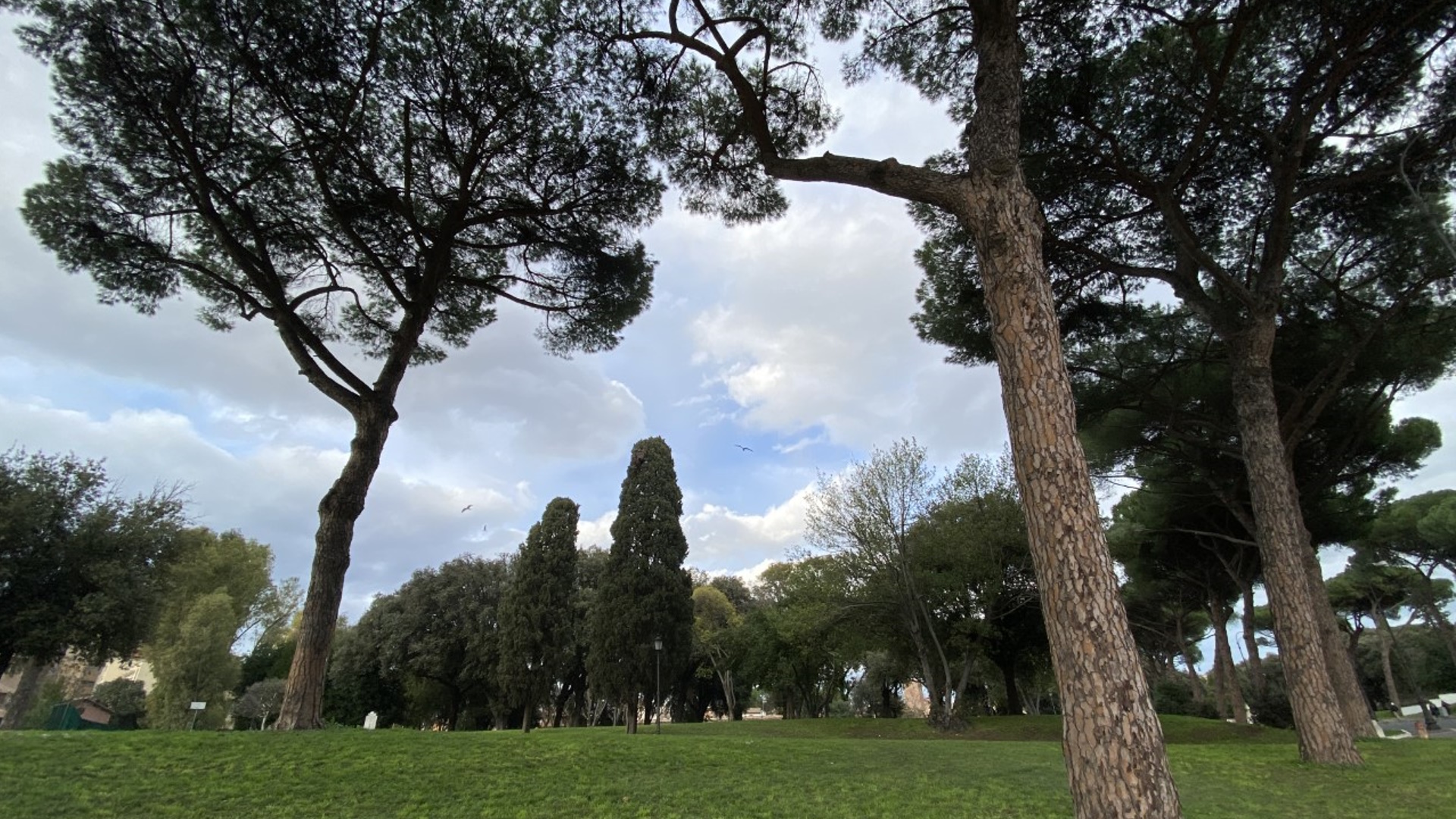
A large green area including lawns, slopes and exceptional evidence of the ancient Rome, such as the remains of the Domus Aurea, the Baths of Titus and those of Trajan. With its around 11 hectares, the park is a gem of the Monti district and a real “archaeological garden”, from whose terraces and avenues it is possible to enjoy amazing close up views of the Colosseum and Palatine Hill.
The project of the park dates back to 1871, in the aftermath of the unification of Italy, but the area took on its current structure in the context of the urban planning of Mussolini’s Rome. The first nucleus of the park was built between 1928 and 1932 by the architect Raffaele de Vico. The upper part of the hill, including the ruins of the Baths of Trajan and so-called Sette Sale or Seven Halls (the huge cistern supplying the baths), was built in the following years by Antonio Muñoz, Director of Antiquities and Fine Arts of the Governorate of Rome, who privileged the search for spectacular perspectives at the expense of the overall vision of the monumental complex.
The garden includes two main avenues (Viale della Domus Aurea and Viale Mizzi) with monumental entrances and a series of fountains which gove the park a romantic and suggestive look and which were created using the natural slope of the places. Among these, the Fontana delle Anfore and the Fontana del Ninfeo are worth mentioning. The vegetation presents a pleasant synthesis between Mediterranean plants (pines, holm oaks, cypresses, oleanders), exotic essences typical of the landscape garden (palm trees) and species typical of ancient gardens (roses, myrtle, laurel).
Informationen
Open from 7.00 to dusk
 Condividi
Condividi
Location
Um mehr über alle barrierefreien Dienste zu erfahren, besuchen Sie den Abschnitt barrierefreies Rom.











































